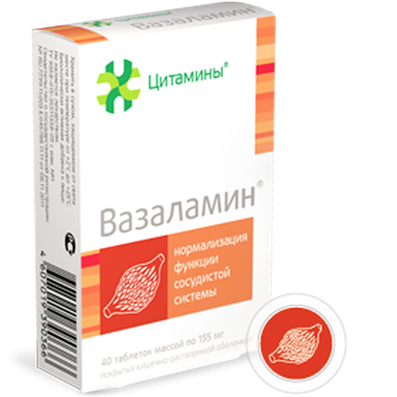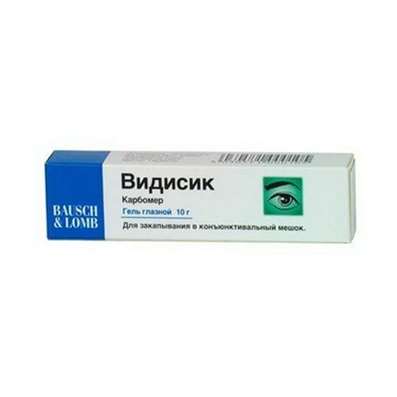Diacarb and Mountains
18 Oct 2016
This article - an attempt to provide objective information about Diacarb (acetazolamide) in relation to acute mountain sickness. We consider the side effects and possible modes of application, indications, contraindications.
The topic will be referred to the term acute mountain sickness. This term refers to a set of the following symptoms: headache, poor appetite, nausea, vomiting, fatigue, dizziness, poor sleep. Symptoms appear within 6-12 hours after ascent and can disappear on their own within 1-3 days.
Acute mountain sickness experienced in varying degrees, all the climbers. High-altitude pulmonary edema and high-altitude cerebral edema are not included in the concept of acute mountain sickness. The severity of symptoms of acute mountain sickness depends on acclimatization schedule (climbing speed), the final ascent height, and previous experience (personal tolerance).
Good physical condition does not prevent the development of symptoms of acute mountain sickness.
Gradual slow ascent (300 m / day, a day of rest for every 1000 m) - is the best approach to the prevention of acute mountain sickness.
Assessment of risk for acute mountain sickness and tactics for the prevention of disease.
Low risk.
- People who had not ever acute mountain sickness, which date back below 2,800 m.
- People who have more than two days to rise to 2500-3000 m, with a gradual increase in height of the overnight stay (less than 500 m / day).
Moderate risk.
- People who used to be experiencing an acute mountain sickness, and rising to a height of 2500-2800 meters per day.
- People without a history of the mark, but rising to a height of 2800 m in a single day.
- All people, rising more than 500 m / day (increasing the height of the night) to a height above 3000 meters.
High risk.
- People with a history of acute mountain sickness, which ascend to a height of 2800 m in a single day.
- All the people who have suffered as a high-altitude pulmonary edema or high altitude cerebral edema.
- All people, rising to a height of 3500 m in a single day.
- All people, rising at a rate in excess of 500 meters per day (with an increase in the height of the night), to a height of over 3,500 m.
- People make very rapid ascent (for example, it is typical for the Kilimanjaro).

Tactics: preventive reception of Diacarb (acetazolamide 250-750 mg daily) should be seriously considered. High doses are preferable. Elevation is the height at which a person is sleeping. Ideally taking the drug should begin the day before getting to such a height. For those whom Diacarb for one reason or another is counter - option remains Dexamethasone (8-16 mg daily). Dexamethasone can be combined with Acetazolamide, if unavoidable extreme climbing conditions. Dexamethasone has side effects that may outweigh its main effect. Therefore, its application to standard prophylaxis is not recommended.
Diacarb (Acetazolamide) reduces the relative risk of symptoms by 48%.
Estimation of the effective dosage of Diacarb (Acetazolamide).
Diacarb in dosages of 250 mg (1 tab.), 500 mg (2 tablets.) and 750 mg (3 tablets.) Per day it is effective in preventing acute mountain sickness, unlike placebo. Diacarb 250 mg per day (1 tablet per day.) - Minimum dose that has proven efficacy in prevention. Furthermore, such a dose has the fewest side effects.
Diacarb is not a magic wand. It does not cure of acute mountain sickness. It just accelerates acclimatization and prevents the development of altitude sickness symptoms. It makes processes occurring in the normal 24-48 hours, held for 12-24 hours.
Cautions in use of Diacarb.
Climbers who had ever allergic to sulfanilamidic antibiotics - can be allergic or anaphylactic reaction to Diacarb. Before any use of medicines required a doctor's consultation.
Diacarb (Acetazolamide) interacts with aspirin, cardiac glycosides, drugs against hypertension, lithium. When you receive these drugs Diacarb should be taken with caution. The drug is contraindicated in pregnancy, and liver / kidney failure.
In the case of altitude sickness symptoms do not subside, and growing - shows the height of the discharge. Further application of Diacarba in an attempt to cope with altitude sickness will not lead to improvement – Diacarb is not a cure, and prevention. Further for altitude sickness can lead to the development of high-altitude pulmonary edema, high-altitude cerebral edema and death.
This is also true for cases where Diacarb does not apply.
Evaluation of side effects of Diacarb (Acetazolamide).
Side effects when applying Diacarb is mild, but relatively frequent. The main side effects are paresthesias, increased urination, and change of taste ("iron taste"). Recent occur much less frequently with low doses (250 mg daily). Paresthesia includes numbness, tingling, tremors in the hands, feet, lips. All side effects are eliminated after discontinuation of the drug.
Myths about Diacarb from the International Society of Mountain Medicine
- Diacarb hides symptoms. No, it does not hide the symptoms, it only accelerates acclimatization. If the symptoms are - you're still sick. If symptoms are not - you are healthy.
- Diacarb prevents increased symptoms of acute mountain sickness with a further ascent. No, diacarb does not prevent deterioration. A lot of people got swelling of the brain or the lungs, believing this myth.
- Diacarb (Acetazolamide) eliminates the risks associated with the implementation of a sharp ascent. No, just diacarb-only reduces risks, but if climbing is fast enough - there are all the risks, up to fatal.
- Cancel of Diacarb intake cause deterioration. No, it does not cause. Withdrawal is not here. Just further acclimatization will flow more naturally, while slowing.
Diacarb and cognitive function.
Information about the impact on cognitive function of Diacarb is contradictory, since an extremely small number of study participants.
Diacarb and children.
Diacarb is show to children who show symptoms of moderate acute mountain sickness, if these symptoms are not reduced after rest and symptomatic treatment.Diacard is recommended in dosage 2.5 mg / kg - every 8-12 hours. Acetazolamide is used in conjunction with other measures, in particular - the descent to a lower altitude.
Diacarb and heart.
Diacarb shows its protective effect with respect to the myocardium. It supports subendocardial viability ratio index closer to the plains of the people taking Acetazolamide, compared to people taking placebo. This index depends on the myocardial oxygen demand and oxygen supply to the myocardium.
Diacarb and poor sleep.
Diacarb helps normalize sleep (reduces the risk of sleep apnea, snoring).
One of the manifestations of height and hypoxemia is the so-called "high-altitude periodic breathing." At night, it manifests itself by periods of deep breathing, are replaced by rapid breathing or central sleep apnea (breath holding). This happens including healthy people at all altitudes from 1800 meters. This leads to frequent interruptions of sleep, feeling of lack of air and lack of sleep.
In other words, snoring can occur in the mountains including people who do not snore in the plain.
Diacarb helps to cope with this problem.
If a person is suffering from snoring and the plain - there are additional devices to facilitate sleep in the mountains.
What objective does Diacarb?
- Systolic, diastolic and mean arterial pressure during altitude acclimatization is less than when receiving Diacarb when compared to placebo.
- Hematocrit decreases under the influence of Diacarb 7.1%.
- Content of plasma erythropoietin exposed Diacarb decreased by 67%. It is associated with increased lung ventilation and oxygen saturation of arterial blood oxygen.
- The content of ferritin in plasma was increased by 540% under the influence of Diacarb.
- Nocturnal oxygen saturation of arterial blood oxygen was increased by 5%.
- Average nightly heart rate decreased by 11%.
- The number of sleep apnea episodes decreased by 74%.
Pulse, normal acclimatization and Diacarb.
Increased heart rate is a normal constituent of acclimatization. Pulse and cardiac output increases immediately after contact with the height, but have trend to decrease as acclimatization. In addition, the pulse tends to decrease climbing. Increasing heart rate is associated with increased activity of the sympathetic part of the nervous system. Her activity tends to be high, even in well-acclimatized climbers.
How long can one take Diacarb?
Studies have been conducted on the treatment of chronic mountain sickness. The inhabitants of the highlands of Peru (4300 m) was obtained Diacarb for three weeks at 250 or 500 mg daily. No side effects were detected. The drug is recognized as the first effective treatment against chronic mountain sickness. At least a three-week course of Diakarb application can be considered safe.
Normal application of Diacarb - one begins to receive at least one day before the beginning of the ascent, the end of the reception - 1-2 days after exposure to altitude, or at the end of the lift, or at the beginning of the descent.

 Cart
Cart





